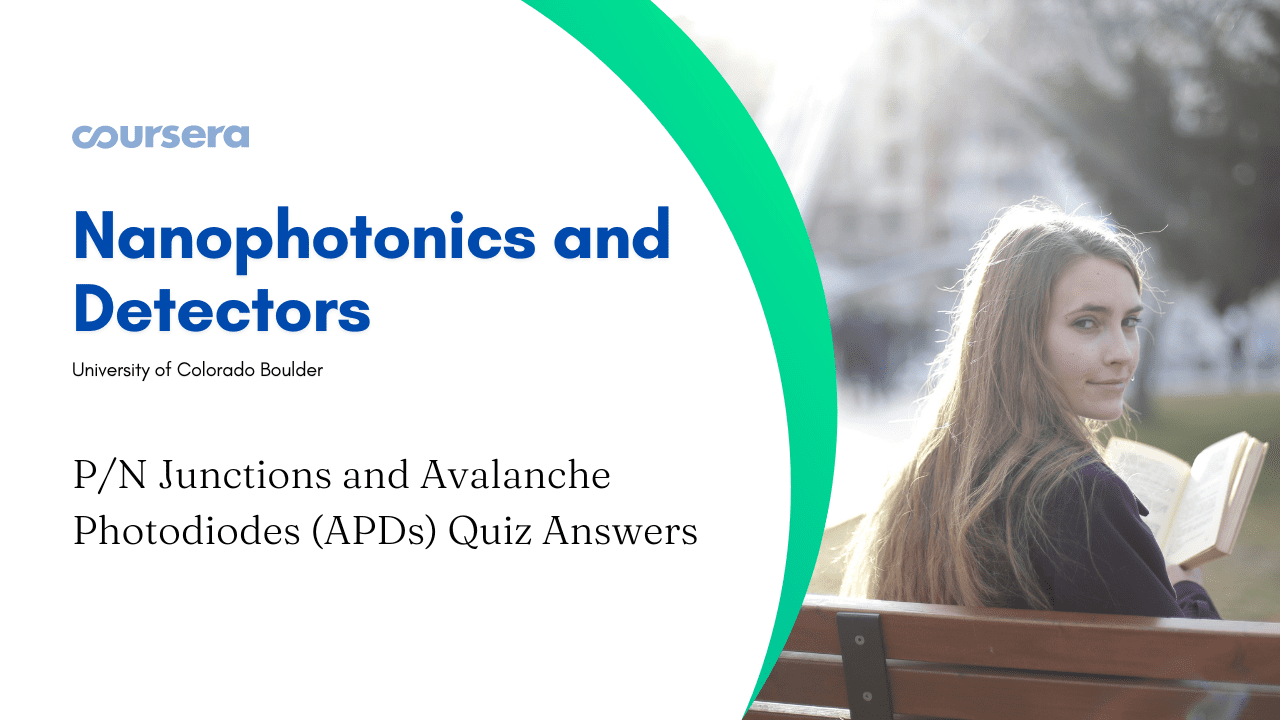Hello Friends in this article i am gone to share P/N Junctions and Avalanche Photodiodes (APDs) Quiz Answers with you. | Nanophotonics and Detectors
P/N Junctions and Avalanche Photodiodes (APDs) Quiz Answers
Question 1)
Using Shockley’s lucky electron thoery, consider a conventional APD made of a GaAs p-i-n junction. The device was illuminated on the p-side with an incident light whose energy was 1.42 eV and power was 1.0 μW. Assume the quantum efficiency η=0.8 and note the charge on the electron, q=1.6×10−19 C, and ℎ ,Planck’s constant, is 6.63 × 1 0− 34 m 2 kg/s.
If the output current was 10 μA, what is the gain? Your answer should be unitless.
Answer: 16
Question 5)
Consider a conventional APD made of a GaAs p-i-n junction. The device was illuminated on the p-side with an incident light whose energy was 1.42 eV and power was 1.0 μW. Assume the quantum efficiency η=0.8 and note the charge on the electron, q=1.6×10−19 C, and ℎ, Planck’s constant, is 6.63×10−34 m2kg/s.
The reverse bias voltage is 5 V. For simplicity, assume that the electric field is zero in p- and n-type regions and that the applied voltage and the built-in potential produce a constant electric field throughout the intrinsic layer whose thickness was 1.0μm.
- Useful parameters: threshold energy for impact ionization Eth = 3.0eV
- electron effective mass me=0.067mo, electron rest mass mo=9.11×10−31kg
- Inverse of phonon scattering rate (relaxation time) τ=1.0×10−13 s
- Built-in potential Vbi =1V. If this is less than the breakdown voltage value, enter 1. Otherwise, enter 0.
Answer: 1


Can you upload every answer here?
Please upload Nanophotonics and Detectors answers fully thanks